11 plants with Purple Leaf + Their Mood Boosting Benefits

This post follows our research editorial guidelines.

Not only can purple-leaf plants spruce up your home and elevate your interior decorating game in 2023 and beyond but did you know they can have a positive effect on your mental health?
Plants in general have been known to lower rates of anxiety and depression, but the purple coloring found on the leaves can actually improve problem-solving, according to certain studies. While the color purple typically represents luxury, wealth, and opulence, they can aid in mental health, making them a great option to place around your office, especially if you work remotely.
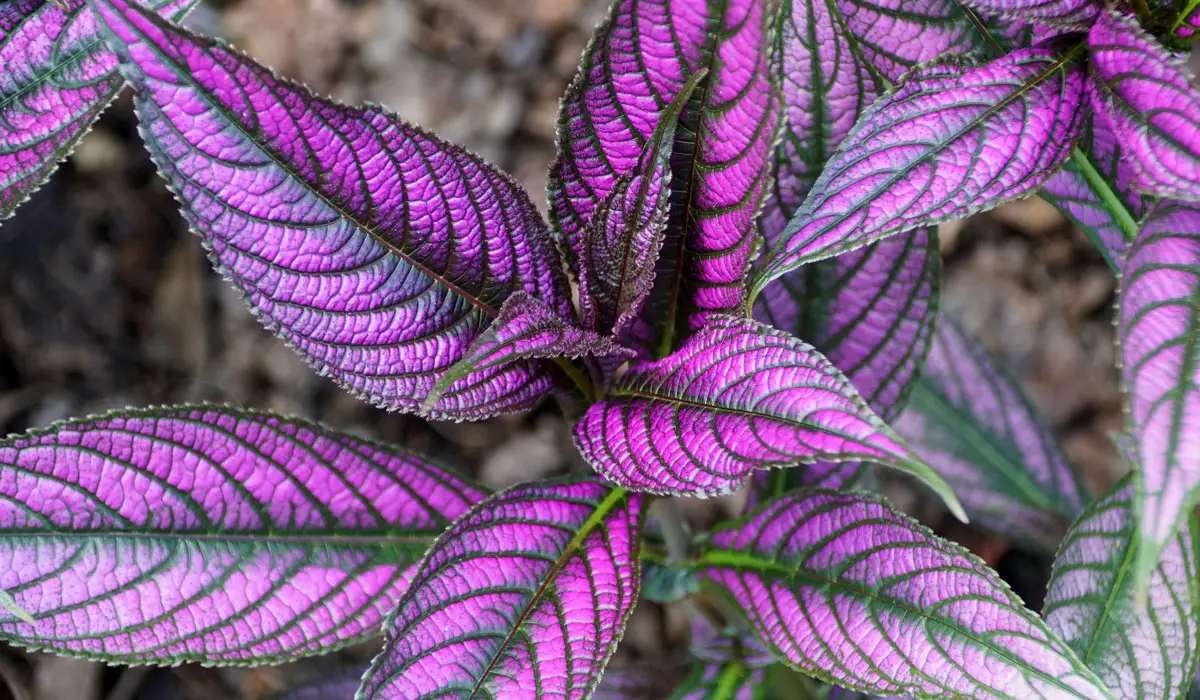
Table of Contents
As someone who works remotely and has purple plants in my home (as well as countless others), I can tout the benefits of having these beautiful plants near my desk and the positive effects they have on my wellness.
Turns out our bees aren’t the only ones who have a tendency toward purple plants. Here are 11 purple-leaf plants you should look into adding to your home in 2023 and beyond:
Why are the Undersides of Leaves Purple?
So the question remains: why are the undersides of leaves purple in a purple-leaf plant? The answer is simple. The purple pigmentation actually helps capture sunlight easier.
This especially comes in handy when these plants are growing in an area with little direct sunlight. These plants are able to absorb what little sunlight there may be in order to utilize it. These plants have a pigment called anthocyanin, which absorbs green and yellow light, unlike the more common chlorophyll which absorbs only green light. This may be why indoor growers reach for nutrient solutions like Cal-Mag when trying to enhance the color of their flowers.
According to Erik Runkle, a Professor from the Department of Horticulture at Michigan State University, “the concentration of anthocyanins is influenced by several factors, including environmental conditions (especially light and temperature) and the pH and presence of metal ions (such as iron and magnesium) in the growing substrate.”
Erik Runkl
In fact, this is the same process that causes certain trees to turn red during the fall. Now that we’ve covered the basics, here are the top 11 purple-leaf plants you should add to your home this season (and why):
11 Purple Leaf Plants For Your Home
There are a large number of purple-leaf plants out there. This includes a number of different species and kinds of plants that are all different sizes and shapes. They all have unique maintenance requirements, as well.
If you’re looking for a purple leaf plant to add to your garden, you came to the right place because there’s something here for everyone.
Here’s a list of 11 purple-leaf plants you might want to add to your home and/or garden:
1. Purple Shamrock (Oxalis triangularis)

We kick off this list with a very interesting plant: the purple shamrock.
Also known as a false shamrock, these plants tend to grow in groups of three. They also fold up at night and reopen in the morning. They love sunlight and do best when grown in a sunny area.
If you live in an especially hot climate, either give them a bit of protection from the sun or grow them indoors. While it does love the sun, too much heat is another story.
Purple shamrocks do best when growing next to a window. If it doesn’t get enough light, it will become leggy and weak in appearance.
Water it every 2 to 3 weeks. The best way to check if it needs water is to see if the top inch of the soil is dry. If it is, then you know it’s time to water it. Purple shamrocks prefer temperatures between 60 and 75 degrees Fahrenheit but can cope with nighttime temperatures as low as 50 degrees.
2. Royal Purple Smokebush (Cotinus coggygria)

This next plant can grow to be 10 to 15 feet tall and 15 to 20 feet wide! Like the purple shamrock, it also likes direct sunlight and partial sunlight. Due to it’s height the royal purple smokebush is considered a favorite among those looking to grow purple flowering trees.
It’s essential that you get soil that drains well in order to keep this plant watered. Apply 1 to 2 inches of water to keep the soil moist. This particular plant is relatively pest and disease-free with the exception of verticillium wilt – a common fungal disease that affects many plants.
It’s recommended that you trim down the royal purple smokebush in the wintertime in order to promote the growth of new shoots while also enhancing the purple leaf coloration. Make sure you don’t overwater this one. It doesn’t tolerate it well and you can drown your plant if you’re not careful enough.
3. Crimson Queen Japanese Maple
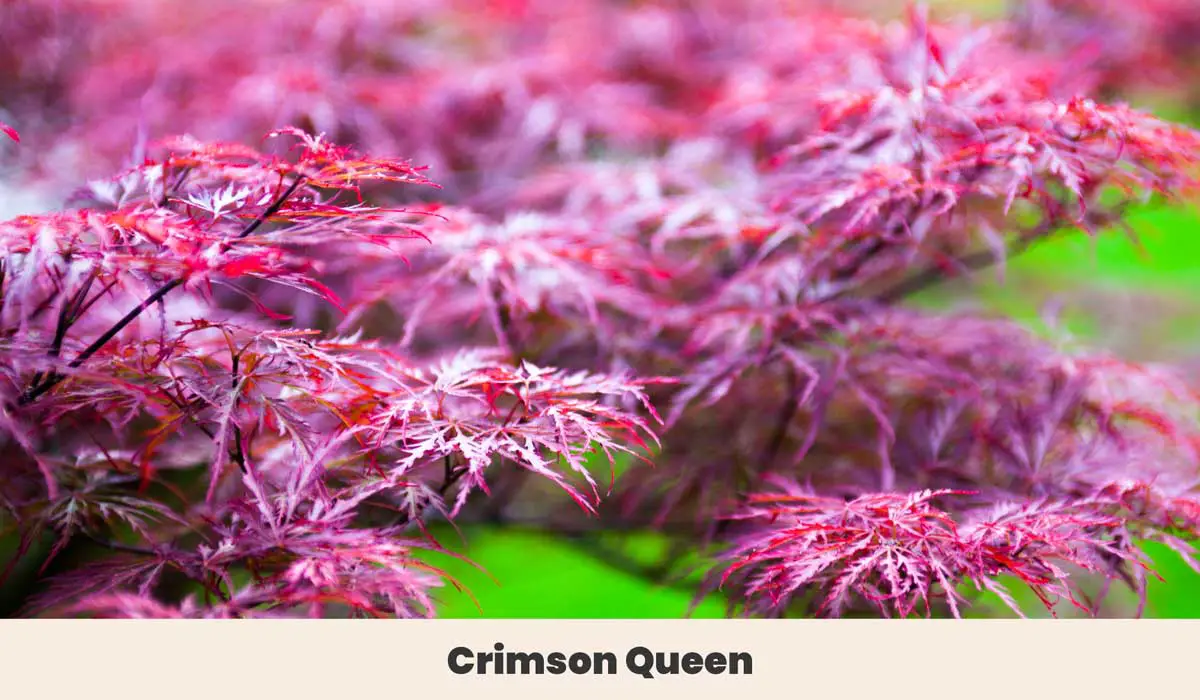
This next plant is a tree with beautiful purple leaves that can provide beautiful color to your garden or the outside of your home. The Crimson Queen Japanese maple tree is known for its compact, dissected leaves that look great all year round.
Best of all, this tree is very low maintenance. Just apply 3 inches of mulch to the ground when you first plant it to keep the roots moist but to also prevent weeds from growing.
The only time you need to worry about watering it is during a drought when it might not be getting as much as it normally would with regular rainfall. If you’re looking to boost growth, using compost will help it grow tremendously.
4. Purple Leaf Succulents (Sedum Spathulifolium ‘Purpureum’)
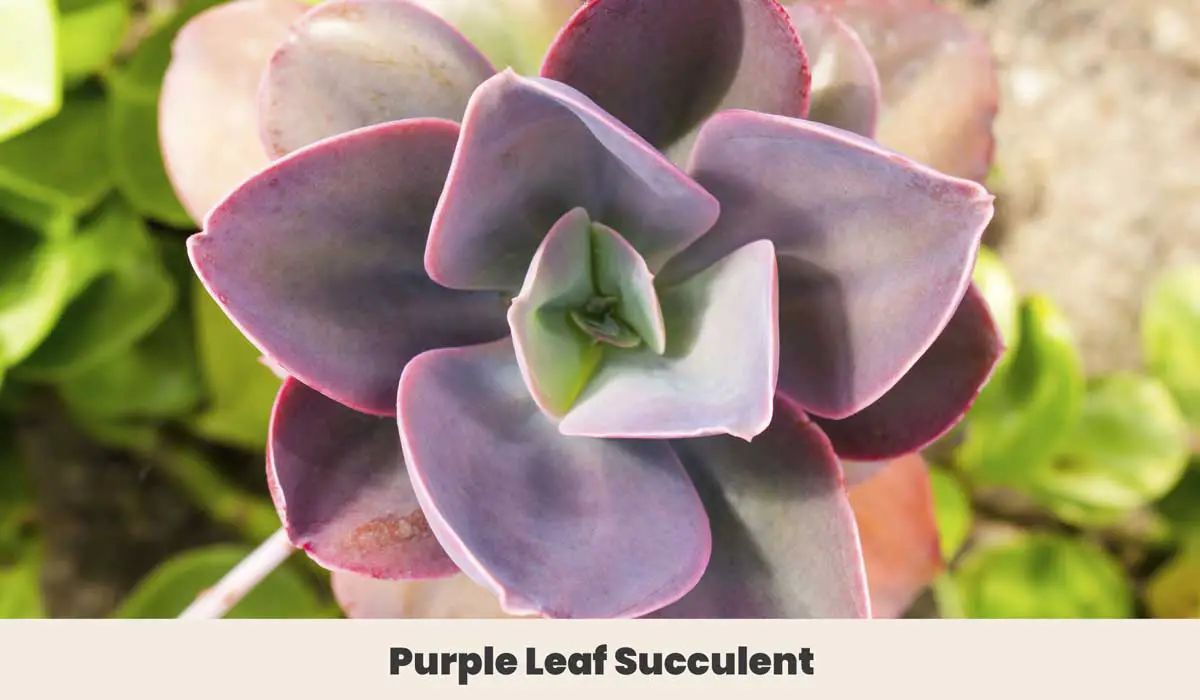
When you think of a great house plant that gives your home a bit of style, you think about succulents, right? After all, who doesn’t love succulents?
Succulents are very popular and trendy and require a fairly minimal amount of upkeep. Succulents love direct sunlight and don’t require a super frequent watering schedule.
If you’re not sure if it’s time to water your succulent, check the soil. If the top 1.25 inches of soil is dry, then it’s time to water it. It’s also recommended that you provide it with a container that has good drainage.
Unfortunately, succulents can suffer from root rot if there’s too much water in the soil.
5. zebra plant (Tradescantia Zebrina)

This is a tropical houseplant that is easily identified by its green and purple striped leaves. If you’re looking to grow this one, keep in mind that it thrives in indirect sunlight. It still needs to be bright enough for it to get sunlight, however.
If it’s too dark, that brightly colored purple foliage will begin to fade. If you keep the temperature between 60 and 80 degrees Fahrenheit, your plant should be fine. Remember, don’t expose it to frost as it can kill the plant.
If the plant is grown outside, certain levels of frost won’t kill it, as it’s capable of growing back in the spring. Make sure your Tradescantia Zebrina is in a pot that drains well. If the soil is dry down to half an inch below the surface, it’s time to water your plant again.
6. Ti Plant (Cordyline Fruticosa)
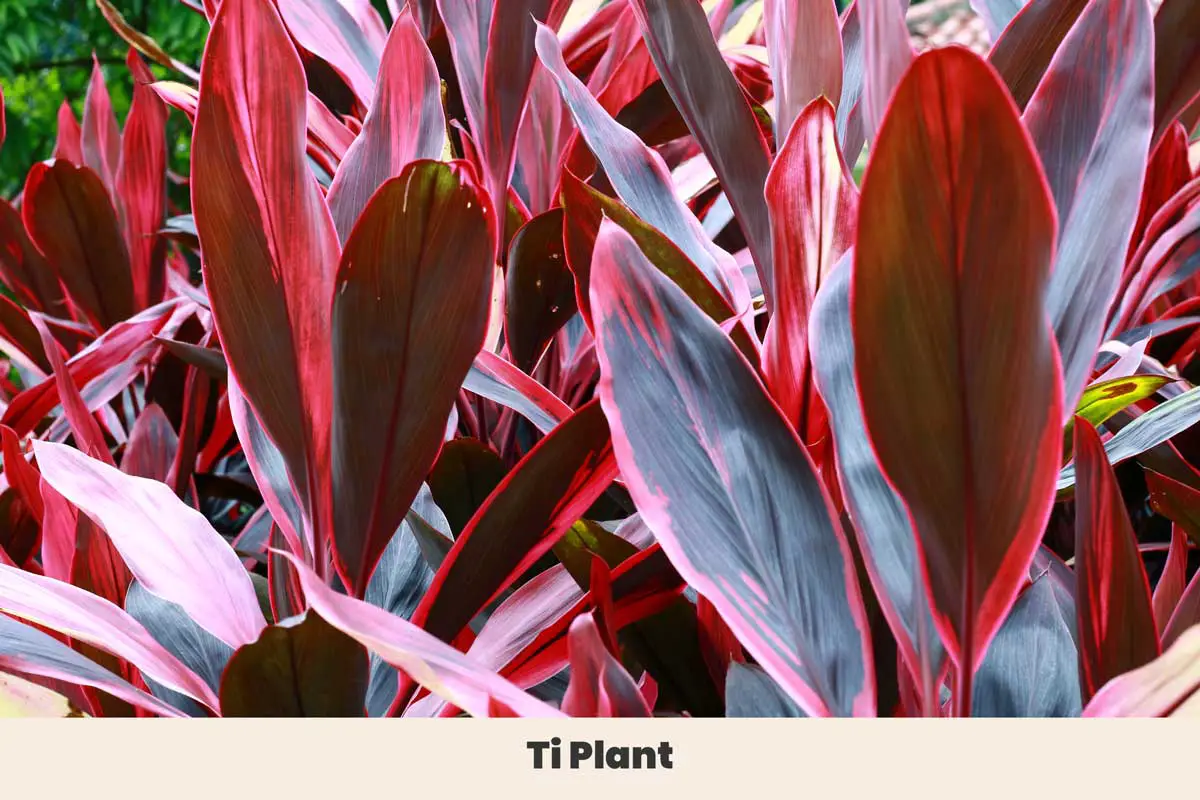
While the common name of this one is “Red Leaf Cordyline,” the leaves themselves tend to be anywhere from burgundy-purple to reddish-pink.
It’s a multi-stemmed perennial plant that loves sunlight and partial sunlight. This particular plant is capable of living in most soil types as long as it has good drainage.
If you’re planning on potting it, just make sure it’s in a pot that has good drainage in order to prevent root rot. That being said, you do need to make sure that you keep the soil moist in between waterings. Just don’t let it dry out completely.
7. Persian Shield (Strobilanthes dyerianus)
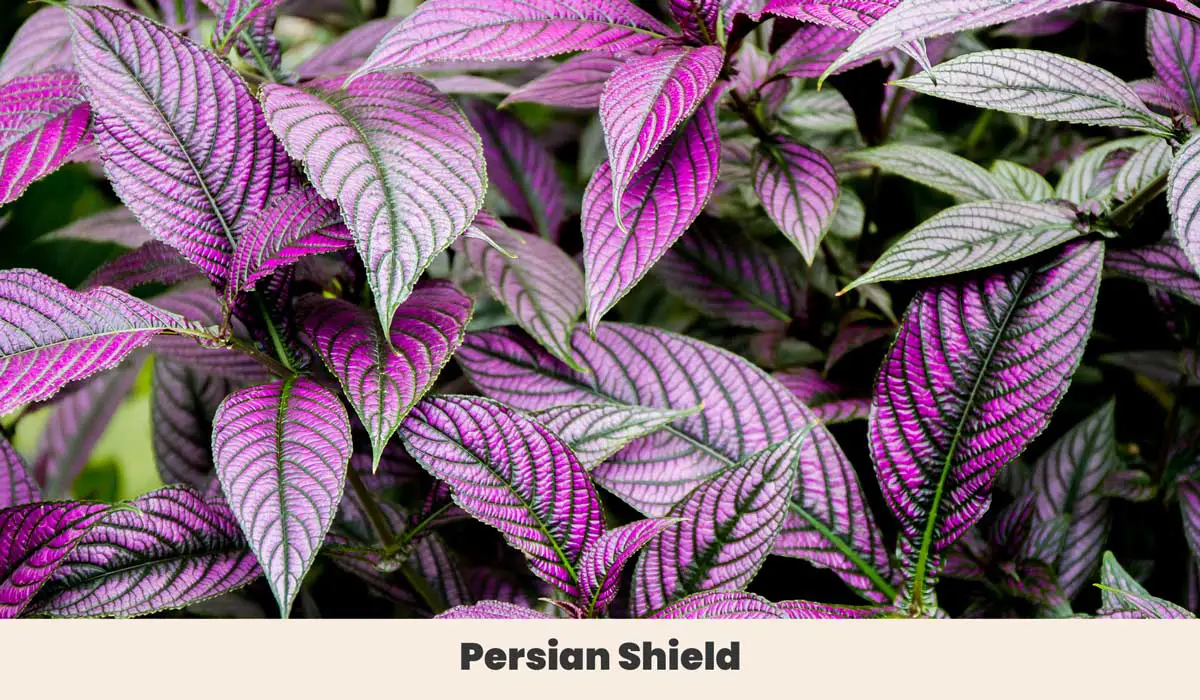
The Persian Shield is a beautiful ornamental plant known for its iridescent purple leaves. This is a plant that does best in hot and humid areas with bright partial sunlight. You want to keep this plant at any temperature above 60 degrees Fahrenheit.
The best way to check to see when this plant needs to be watered is if the top third of the soil is dry. If you grow this plant indoors, you might need to water it more than once a week, so check the soil daily to see if it needs more moisture.
8. Ornamental Cabbage (Brassica oleracea)

This next entry is edible, though it might not rank on everyone’s favorite food list.
Ornamental cabbage is a type of cabbage that has a beautiful purple color to it that makes it look unique. When compared to normal cabbage, this has a very bitter taste and is usually used more as a garnish on a plate than as an ingredient.
If you’re looking to grow your own ornamental cabbage, keep temperatures between 65 and 70 degrees and keep them in the full sun. A little bit of afternoon shade in warmer areas is also okay. They also like to grow in acidic soil that drains easily.
While temperatures between 65 and 70 are ideal, colors in this plant tend to intensify when temperatures drop below 60 degrees Fahrenheit.
9. Heuchera (Heuchera micranth)

Heuchera, also known as Coral Bells, are perennials known for their gorgeous bell-shaped flowers. While these plants are capable of growing in a number of different lighting conditions, they do best when they’re placed in direct sunlight between 4 to 6 hours every day.
I recently planted 2 of these beauties in my rock garden to add a pop of long-lasting color as the rest of the flowers start to fade. Most Coral Bell varieties have deep purple leaves, although if you look hard you can find some with bright red leaves.
These lighting conditions will result in the best color of the foliage as well as the best bloom. They do best in rich soil that drains well but will grow fine in clay or rocky soils.
When watering, make sure the soil is moist but not soggy. Once you’ve established the plant, it can be drought-tolerant with a little extra watering needed during especially hot spells.
10. Purple Emperor (Sedum Telephium)

This gorgeous plant grows to be 18 to 24 inches tall with vibrant pink flowers that stay year-round. It will blossom in the summer and the last 6 months, well into the winter season. This plant loves well-draining soil, a full sun, and can deal with dry to medium moisture.
The Purple Emperor tends to be drought-tolerant and disease resistant. If you forget to water this one, don’t worry. It can last for a while between waterings. This plant is pretty low maintenance, too, making it perfect for beginners.
As long as you remember to water it occasionally and keep it in direct sunlight, you should have no problem with the upkeep.
11. Purple Leaf Weigela (Weigela florida)

This last plant is a deciduous shrub with dark purple leaves and is sure to stand out in your garden. These shrubs grow to be about 5 feet tall and 5 feet wide. They love moist soil that drains well, although they can also grow in clay or sand.
You’re going to want to plant this one in full sun with a light amount of shade. This will allow the plants to get a much deeper color.
The purple leaf weigela is also pretty low maintenance when it comes to watering. Once it’s established, only occasional watering is needed in order to keep it looking great. Be sure to trim weak shoots or twiggy stems on occasion to not only keep them looking nice but to also make sure it continues to grow properly.
Final Thoughts
If you’re looking to add some beauty and liveliness to your home, both inside and out, these purple-leaf plants are the way to do it. Between many of them being low maintenance to having the ability to remain vibrant all year long, these plants are versatile enough to be used by both beginners and seasoned growers alike.
